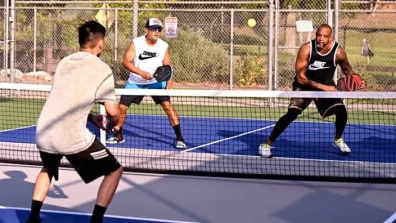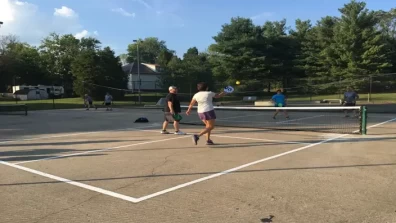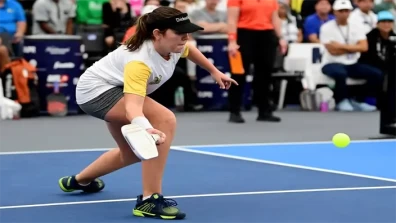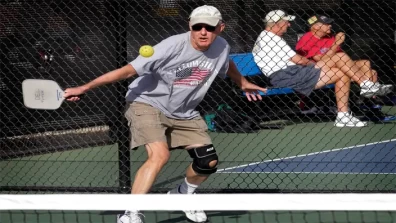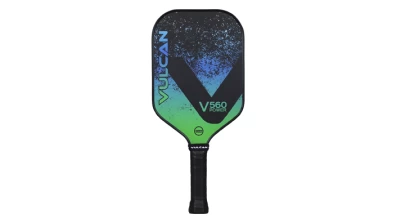On the days when you're hunting for the perfect pickleball, you would come across two contenders. While one is destined for the indoors, and the other is built for the outdoor games. Now, the interesting yet confusing part is that they might seem like twins at first glance. However, trust us, they're much different than each other, having some major distinctive features.
This guide is your ticket to understanding all the evident differences between indoor and outdoor pickleballs, ensuring your game is on point. So, whether you're planning an epic weekend to spend playing this game or just gearing up for casual fun, let's dive into what makes these balls unique.
Table of Contents
Pickleball Indoor Vs. Outdoor Balls: Comparison Table
| Entities | Indoor Pickleball | Outdoor Pickleball |
| Weight | 0.85 Ounces | 0.925 Ounces |
| Number Of Holes | 26 | 40 |
| Hardness | Softer | Harder |
| Durability | More Durable | Less Durable |
| Hole Diameter | 0.4 inches | 0.3 inches |
Now, this is a rough sketch to help you understand the pickleball indoor vs outdoor balls competition. Let's discuss in detail how these differences can impact your gameplay in the proceeding sections.
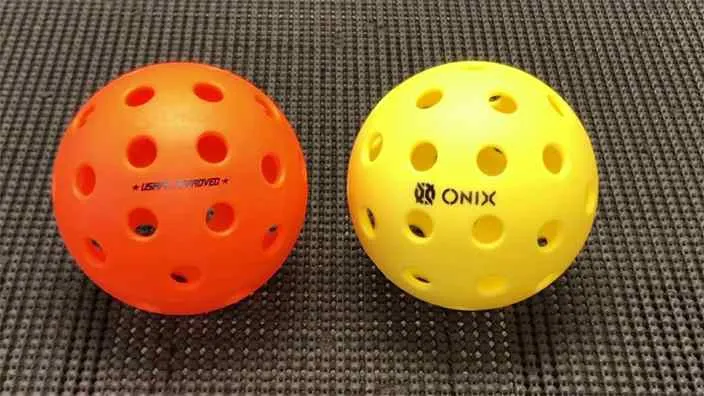
Differences Between Indoor & Outdoor Pickleballs
Indoor and outdoor pickleball aren't the same. The balls used in each setting differ, from the number and diameter of holes to other crucial factors. Let's briefly overview them:
1- Weight
Outdoor pickleballs tip the scales towards the heavier side compared to indoor ones. This unique configuration is crucial in maintaining the ball's stability, particularly when faced with environmental obstacles. In accordance with regulations, a standard pickleball should weigh between 0.78 and 0.935 ounces.
The average weight of an outdoor pickleball tends to be around 0.925 ounces, while the indoor ones are typically around 0.85 ounces. So, now the question emerges: how does a higher number of holes contribute to the increased weight of an outdoor pickleball? The answer lies in the unique arrangement of holes, resulting in reduced material within the ball. Consequently, when you hold an outdoor pickleball, the weight perception may lean towards the heavier side compared to its indoor counterpart.
2- Number Of Holes
Outdoor pickleballs typically boast 40 holes, while their indoor counterparts have around 26 holes. Keep in mind that these figures are approximate and may vary. However, the number of holes will always stay within the mentioned amount. So, why the difference in hole count? The thing is that as the number of holes increases, the chances of the external factors affecting your shot decrease.
For instance, when playing outdoors, considerations like wind speed and weather conditions come into play before each shot. Outdoor pickleballs, with their increased number of holes, enhance aerodynamics, enabling you to navigate these environmental challenges and make more accurate hits. On the other hand, indoor games, being less susceptible to environmental obstacles, don't demand as many holes on the pickleball.
3- Diameter Of Holes
Another significant contrast between outdoor and indoor pickleballs lies in the diameter of their holes. With their fewer but larger holes, indoor balls typically sport a hole diameter of approximately 0.43 inches. In contrast, outdoor pickleballs have numerous but smaller holes.
For instance, the average hole diameter on an outdoor pickleball might be around 0.282 inches. It's important to note that the diameter of holes can vary significantly from brand to brand. In some cases, outdoor pickleballs may exhibit non-uniform hole diameters, though such irregularities are absent in indoor pickleballs.
Additionally, the smaller diameter of the holes on an outdoor pickleball is a key factor contributing to their increased surface area compared to an indoor pickleball. This expanded surface area plays a pivotal role in enhancing the weight of outdoor pickleballs, as discussed earlier.
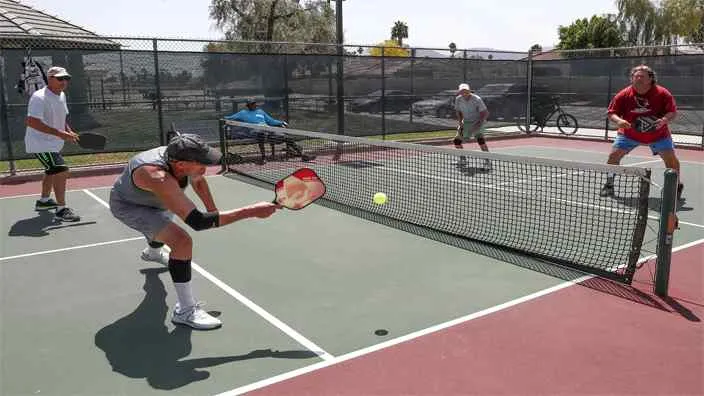
4- Hardness
An indoor pickleball can also differ from outdoor pickleball in terms of hardness. For example, an outdoor pickleball is usually harder when compared to the indoor ones. This is because of their nature to be used for outdoor games so they can withstand harsh weather conditions. But how can we know if the pickleball we have purchased is hard enough or not?
One simple way is to assess the thickness of the pickleball you have. An outdoor pickleball is usually thicker, whereas an indoor one is made of a bit thinner material. However, remember that the thickness can never affect the dimensions of the ball, and it will remain the same no matter what.
Another way to inspect the hardness of a pickleball is to check what the ball is made out of. Even though all pickleballs are made of plastic, this material can vary significantly. For example, the plastic used might be of different composition, further affecting the overall gameplay. The four different types of plastic used to manufacture a pickleball are:
- LDPE: Low-Density Polyethylene
- HDPE: High-Density Polyethylene
- PP: Polypropylene
- PET: Polyethylene Terephthalate
Additionally, you can also use a Durometer to double-check the hardness of the pickleball you have. As for now, there is no such rule that an indoor pickleball should be made of different plastic than an outdoor one. But if you ever test an outdoor pickleball with a Durometer, you will find that they are made of HDPE. Consequently, the indoor ones are often made of LDPE.
5- Durability
Contrary to popular belief, outdoor pickleballs are not necessarily more durable than indoor ones. You can't expect your outdoor pickleball to last for ages just because it is made tough. Outdoor balls are crafted from rigid materials that lack the elasticity found in indoor pickleballs. As a result, they are more susceptible to cracking and deformation.
In contrast, indoor pickleballs exhibit greater elasticity, reducing the likelihood of shape distortion. Moreover, indoor balls operate under less pressure compared to outdoor ones. Collectively, these factors contribute to the prolonged lifespan of indoor pickleballs.
It's essential to acknowledge that no pickleball is immune to wear and tear. As time progresses, the ball will lose its original shape, and signs of damage will become evident. Ultimately, cracks may develop, marking the end of the pickleball's functional lifespan.
6- Color
So, what color are outdoor pickleballs and indoor pickleballs? The color of indoor and outdoor pickleballs can differ based on visibility needs. Indoor balls often come in bright, vibrant colors like yellow or neon green, enhancing visibility in well-lit indoor environments. These colors stand out against the typically plain indoor court backdrop.
On the flip side, outdoor pickleballs are available in muted tones like white or light yellow. This choice is strategic for outdoor play, where excessive brightness might create glare issues. The subtle hues of outdoor balls help players track the ball more effectively under the natural sunlight.
7- Maneuverability
With their softer composition and smaller, larger holes, indoor pickleball offers better control and predictability during gameplay. The slower pace allows for longer rallies, but they may lack the force behind them, resulting in gentler bounces off the paddle.
However, outdoor pickleballs move faster and interact more aggressively with the court and paddle. While this allows for powerful shots, the trade-off is a decrease in control, leading to shorter rallies. The increased number of smaller holes contributes to the ball's speed and unpredictability.
One important thing to note is that temperature plays a significant role in outdoor pickleball dynamics. In cooler weather, outdoor balls can become harder, impacting their playability and increasing the risk of cracking. This temperature sensitivity adds an extra layer of consideration for players in outdoor settings.
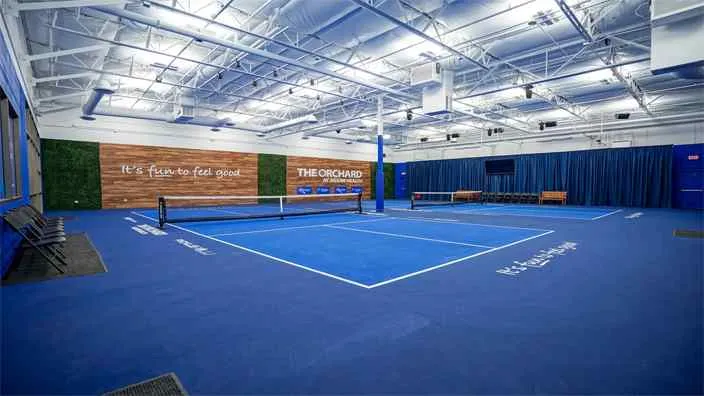
Read More:What Paddle Do Pickleball Pros Use?
Are Indoor & Outdoor Pickleball Courts The Same Size?
Yes, indoor and outdoor pickleball courts are the same size. Both follow the standard dimensions of 20 feet by 44 feet for the playing area, with a non-volley zone (kitchen) extending 7 feet from the net on each side.
Additionally, both types of courts feature a non-volley zone, commonly called the "kitchen," which extends 7 feet from the net on each side. This consistency in court size ensures that players can transition between indoor and outdoor settings without any hassle.
How To Find The Right Pickleball?
Choosing the right pickleball involves considering factors such as material, size, weight, and brand. Here are some tips to help you find the right pickleball:
- Check The Ball's Specifications: Look for the official size and weight specifications. Official pickleballs should have a diameter of 2.87 to 2.97 inches and weigh between 0.78 to 0.935 ounces.
- Consider Skill Level: If you're a beginner, you might want a ball with larger holes for easier control. Intermediate and advanced players may prefer balls with smaller holes for faster and more challenging play.
- Read Reviews: Research online reviews to see what other players say about pickleball brands and models. This can give you insights into the performance and durability of specific balls.
- Try Different Brands: Don't be afraid to experiment with different brands and models. Each player may have preferences based on playing style, court type, and personal feel.
- Ask For Recommendations: If you have friends or fellow pickleball players, ask for their recommendations. They might have insights into what works well for them, and you can consider their experiences.
- Consider Indoor Vs. Outdoor: If you primarily play indoors or outdoors, choose a ball specifically designed for that environment. Indoor balls might not perform as well outdoors and vice versa.

Pros & Cons Of Outdoor Pickleballs
| Pros | Cons |
|
|
| |
|
Pros & Cons Of Indoor Pickleballs
| Pros | Cons |
|
|
| |
|
Frequently Asked Questions
What Is The Difference Between Indoor & Outdoor Pickleballs?
Indoor pickleballs typically have larger holes for smoother, controlled play. Outdoor pickleballs have smaller holes, providing durability for rougher outdoor surfaces. The choice depends on your playing environment and personal preference.
Can I Use Indoor Pickleballs Outdoor?
Yes, you can use indoor pickleballs outdoor, but it's not ideal. Indoor pickleballs, designed for controlled play, have a softer composition and larger holes. During an outdoor gaming session, these balls may be harder to control due to wind and environmental factors. Moreover, such pickleballs also have less durability outdoors, making them prone to cracking and deformation.
What Is The Difference Between The Yellow & Orange Pickleballs?
The color difference between yellow and orange pickleballs is primarily for visibility. Some players prefer yellow for indoor play, while orange is often chosen for outdoor games for better visibility against various backgrounds.
How Many Holes Does An Indoor Pickleball Have?
An indoor pickleball usually has 26 holes, which is fewer than outdoor pickleballs. This difference is designed to enhance the game experience indoors. This build-up also provides a smoother and more controlled game, resulting in improved playability.
Conclusion
Hopefully, our comprehensive yet interesting guide on pickleball indoor vs outdoor balls has provided enough information on which ball to get for yourself. So, if you plan to play pickleball on an outdoor court, you need to get an outdoor pickleball. However, if you are a beginner and want to amp up your pickleball skills indoors, go for an indoor pickleball for yourself! Also, which ball do you prefer to play with? Let us know in the comments below!











